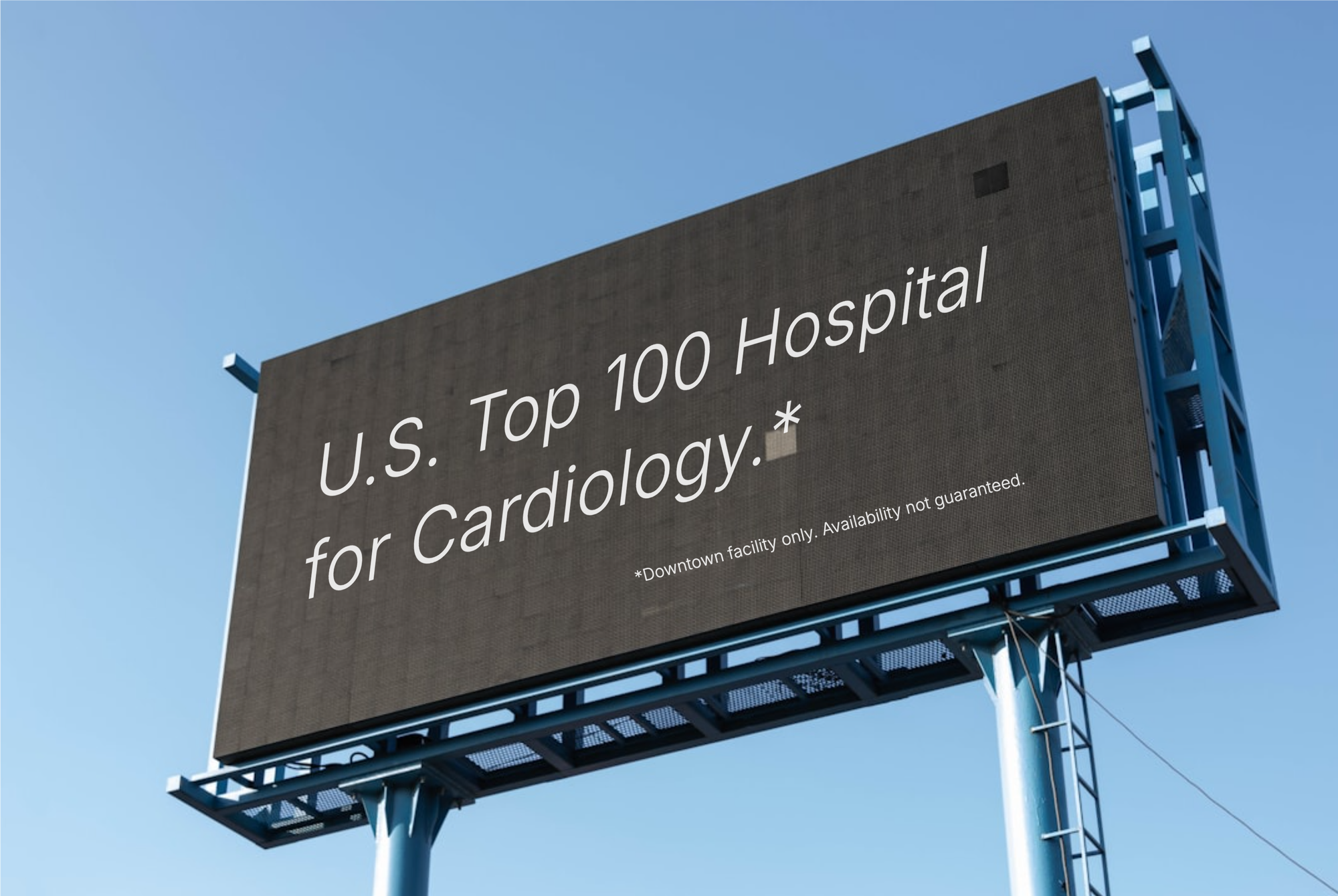The Texas Hospital Boom: Who’s Really Being Served?

Across Texas, hospital buildings are rising almost as fast as the skyline in its booming metropolitan areas. From Dallas to Austin to Houston, multi-million dollar healthcare campuses are sprouting in suburbs and satellite cities, complete with sleek branding, modern lobbies, and promises of "comprehensive care."
But behind the polished façade, there's a growing disconnect between what these hospitals advertise and what they actually provide—especially when it comes to tertiary and emergency services.
So, what’s driving this rapid expansion, and who’s really benefiting?
The Rise of Healthcare Consolidation in Texas
Let’s start with the obvious: big health systems are getting bigger.
Major players like HCA Healthcare, Baylor Scott & White, and Texas Health Resources have been consolidating smaller practices and acquiring regional hospitals at an aggressive pace for years. It’s a strategic land grab—acquire market share, build in growing suburbs, and beat competitors to the punch.
From a business standpoint, it makes sense.
Suburban communities are swelling with families, many of whom have private insurance—exactly the kind of demographic health systems want to capture. Rural expansions also come with incentives, such as tax breaks and easier access to land.
But expansion isn't just about building facilities—it’s also about branding.
Hospitals tout "24/7 stroke care," "comprehensive cardiovascular services," and "ICU capabilities" in marketing materials.
What’s often left unsaid?
These services are often limited or unavailable after hours, on weekends, or without transfer to a central hub hospital—sometimes 30 to 50 miles away.
THE ILLUSION OF ACCESS: BRANDING VS. REALITY
If you live in the suburbs of a booming Texas metro, chances are you've seen the commercials.
Glossy ads on local TV showcase real patients giving emotional testimonials—stroke survivors, heart patients, cancer warriors—all praising a well-known hospital brand that saved their lives.
You might even know a neighbor who had a great outcome downtown at that very system’s flagship location.
So when a new outpost of that hospital system opens 10 minutes from your house, it’s only natural to assume you now have the same level of care in your backyard.
After all, it’s the same logo, the same signage, and the same reassuring language about “comprehensive care” and “advanced services.”
But the truth is more complicated—and more dangerous.

That suburban hospital may not have a neurosurgeon, interventional cardiologist, or even a staffed ICU overnight. You might be transferred if you're lucky—but not necessarily into the main tertiary care hospital you saw on TV.
Many times, there are no beds. And transfers are often routed to whatever location has capacity, which might not be any more capable than where you started.
This creates what I call illusory agency—the comforting but misleading belief that choosing a branded hospital system gives you an edge in an emergency.
It’s a powerful psychological safety net. Patients and families feel better seeing a familiar health system’s name on the building, believing they’re “in the system” and will be seamlessly escalated to the best care available.
But that perception often doesn’t match operational reality. The truth is:
- You may be transferred to a facility only marginally more equipped.
- You may end up stuck waiting for hours for bed space that never materializes.
- You may pay thousands for air or ground transport that doesn’t improve your care outcome.
- And critically, you’re no more likely to get into the flagship hospital than if you walked into an unaffiliated ER across town.
The root issue? While hospital systems have aggressively expanded their suburban footprints, they haven’t scaled their core inpatient or tertiary infrastructure downtown.
The math doesn’t work—more ERs and suburban hospitals funnel more critical patients into the same bottlenecked system, without the added bed capacity or specialist coverage to absorb the growth.
So when systems advertise they offer the same “high-level care close to home,” the question isn’t whether they mean to—it’s whether they can.
Right now, the gap between brand perception and real access is widening. And patients are the ones paying the price—not just financially, but with delayed or compromised care.
TRANSFERS THAT DON'T DELIVER: WHEN THE SPECIALIST NEVER SHOWS UP
Let’s say the system does work. You’re one of the lucky ones.
After hours of waiting, an ambulance arrives, maybe even a helicopter. You’re transferred out of a suburban ER to a tertiary care hospital in the city—finally, some relief.
But when you arrive, something feels off.
Instead of being evaluated by the specialist you were told was “on call,” you're seen by a mid-level provider—a well-meaning and experienced PA or NP—who’s rounding on behalf of that specialist.
Maybe they spoke briefly to a cardiologist by phone, or are following a protocol until Monday. But you never actually see the expert whose name was mentioned during the transfer process.
This is the unspoken truth of many hospital systems: transfers don’t always equal escalation.
Patients are moved with the assumption that higher-level care awaits, but what they often get is a new building, a new wristband, and the same level of care—just a different zip code.
Weekend and after-hours coverage make this even more precarious. Specialists may not be in-house, or they may be spread so thinly across the system that meaningful patient interaction is impossible.
In some hospitals, intensivist oversight is virtual—or simply unavailable. Mid-levels are tasked with holding down the front line, not because they aren’t capable, but because the system is stretched beyond its clinical staffing limits.
And while these providers often do incredible work, they're not a substitute for in-person, specialist physician-driven decision-making—especially in complex or deteriorating cases.
All of this is compounded by:
- Expensive transport logistics such as the use of air ambulances that are often out-of-network
- ICU beds that are technically "open" but functionally full because of staffing constraints
- System-level protocols that prioritize policy compliance over patient urgency
For patients and families, the journey from one hospital to another can feel like progress. But all too often, it’s a lateral move—not a leap forward.
The heartbreaking reality is that being transferred into the system doesn’t always mean being seen by the system.
So, What Responsibility Do These Systems Have?
This raises a difficult but necessary question: If a health system builds a hospital and markets it as capable of handling advanced care, shouldn’t it be required to actually provide that care—24/7, not just during banker’s hours?
We regulate how hospitals are licensed. We track quality metrics. But there's a gaping policy hole when it comes to matching advertised capabilities with actual, on-the-ground resources.
Should there be:
- Minimum physician specialist coverage requirements for hospitals advertising tertiary care?
- Transparency mandates that require hospitals to publicly disclose what services are staffed in real time?
- Oversight mechanisms that ensure rural or suburban expansions aren't just cash grabs at the expense of real emergency preparedness?
And if health systems can't meet those standards, should they even be allowed to market those capabilities or to build an additional referral facility?
A Case for Ethical Expansion
Not all expansion is bad.
Growing communities do need hospitals.
But the expansion must come with a moral and regulatory responsibility. Building for branding purposes—without fully staffing or equipping for complex care—is, at best, misleading.
At worst, it’s dangerous.

Texas policymakers and health system leaders must face this dilemma head-on:
- Are we okay with a tiered system where suburban patients get a polished front-end but subpar clinical backup?
- Should there be penalties for hospitals that over-promise and under-deliver in emergencies?
- And perhaps most critically: Is hospital expansion really serving patients—or just market dominance?
Final Thought
The next time you pass by a glistening new hospital in your neighborhood with signs boasting “comprehensive care,” ask: who’s on call at 3 a.m. this Saturday?
Because branding might be 24/7—but lifesaving care often isn’t.
💡 Texas might be leading the way in hospital construction, but unless we rethink how we regulate and support these expansions, we risk building beautiful buildings with hollow care inside.

Member discussion